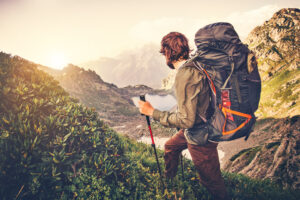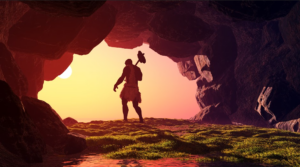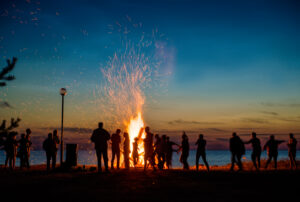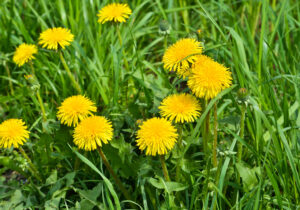As we have evolved as a species, so has our understanding of the world around us, and our relationship to it. Through building cities, and developing technologies that can tell us where we are, look up any piece of information, or connect us to another person, all in an instant, our brains have learned to process information completely differently to how they used to.
 Our ancient ancestors used the land around them to survive, they communicated with the Earth, looking for signs to lead them to the tools necessary for furthering their survival. These signs continue to exist today, but our sensitivity to them has dulled, we have forgotten what to look for, sometimes even where logic dictates.
Our ancient ancestors used the land around them to survive, they communicated with the Earth, looking for signs to lead them to the tools necessary for furthering their survival. These signs continue to exist today, but our sensitivity to them has dulled, we have forgotten what to look for, sometimes even where logic dictates.
Here, we look at four core survival priorities and how, millennia ago, our ancestors secured each of them, ensuring survival. They are listed in order of importance, which is your first survival lesson: shelter, water, fire, food. By properly prioritizing your needs, you increase your chances of survival.
Just as early humans listened to their predecessors, learning from their stories and experiences, we can now learn from them how best to harness nature’s power and improve our chances of survival, should we ever find ourselves stranded in the wilderness.
Shelter
 Shelter is the most important of the four core survival essentials. Exposure can kill you much faster than dehydration or hunger; hypothermia can kill in just hours, whereas dehydration takes a few days. It is an animal instinct to seek shelter, and early humans would build bases in locations dependent on a variety of factors.
Shelter is the most important of the four core survival essentials. Exposure can kill you much faster than dehydration or hunger; hypothermia can kill in just hours, whereas dehydration takes a few days. It is an animal instinct to seek shelter, and early humans would build bases in locations dependent on a variety of factors.
It is the location, rather than the structure, of these shelters, from which we can take our first lesson. As long as you are protected from rain and wind, and somewhat insulated from the ground, you’ve got your basic shelter needs covered in terms of the form of the shelter.
Early humans built communities away from natural threats and close to natural resources. For us, this means avoiding places like cliff edges and animal territories, and seeking areas abundant in building materials and water.
They also made sure that any spaces they did inhabit were south-facing allowing sun to enter throughout the day helping against the cold.
Water
We lose water through sweating, urination, and even breathing, so keeping hydrated is your next priority to continue your survival.

Seek out running water as this is much safer to drink than pooled or stagnant water, because algae and bacteria find it much harder to latch onto the riverbed and grow in flowing water.
Finding this can be as simple as standing still and listening for a rush of water. You should remain still for at least a full 5 minutes, as it can be difficult to tune out other noises around you to begin with. Otherwise, water flows downhill, so by heading deeper into valleys, you will increase your chances of finding water.
Our ancestors were much more in tune with their animal instincts than we are in the modern era and it was this increased connection and sense of a shared understanding of the world, that led them to use animals in their hunt for water. Mirroring their techniques, if you see multiple animal tracks converging in one direction, you can reasonably presume that a source of water is in that direction.
Fire
At its core, one of the strongest survival uses for fire is actually in its psychological impact on us as humans. We interpret and understand light from a fire as comfort and warmth, and scientists believe that this is mostly thanks to our ancient ancestors.
Campfires would have provided a space for communities to come together. Those who sat together at these gatherings, the more social members of the communities, passed these traits down the generations and now we find comfort and safety in a fire’s glow. The light and warmth reduces fear and anxiety, which in turn leads to more level-headed survival decision-making.
Further to the psychological advantages, a blazing fire, protects us against animals, provides the the means to cook food, and provides a source of light useful for once night falls.
Food
Knowing what is and isn’t edible would have been information passed down through generations via teachings and stories. Each community would have had a very rich, very specific knowledge about the area in which they lived and the plants native to that area.
The ancient technique known as the “universal edibility test” though not perfect, is useful to us today as a last resort, and would most likely have been how a neanderthal community would have built a complete picture of an area new to them.
 The technique involves very small amounts of a food gradually being introduced to the body over some hours, checking for negative reactions consistently.
The technique involves very small amounts of a food gradually being introduced to the body over some hours, checking for negative reactions consistently.
By relying first on sight and smell of a plant (once again entering the communication, reading the signs nature has made available), a person would then rub the plants on the wrists and forearm, before introducing it to the lips and the inside of the cheek, and finally tasting and eating a small amount, all over the space of a few hours.
This technique certainly isn’t perfect as some foods, especially fungi, could take a long time to react to the body, so it would be safer for you to track and hunt for animals. This is, of course, much easier said than done as they have a greater tendency to run!
By turning to our earliest ancestors, understanding how they were able to survive without the countless modern amenities we are lucky enough to have today, we can better prepare ourselves should we find ourselves in a survival situation.
Remember these four principles, their order of importance, and some of the techniques our earliest ancestors used to obtain them, and you should be fine. There is an Aboriginal saying that is fairly appropriate here: “The more you know, the less you need.”
Sources:
http://www.primitiveways.com/survival_skills.html
http://traveltips.usatoday.com/water-wilderness-2339.html
http://io9.gizmodo.com/here-are-some-essential-survival-skills-weve-lost-from-1732594841
http://www.evoanth.net/2012/04/05/first-flames-earliest-man-made-fire-found/
http://australianmuseum.net.au/homo-sapiens-modern-humans
http://www.instructables.com/id/7-Methods-of-Primitive-Fire-Starting/

